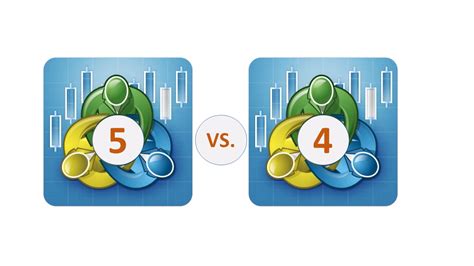Every price movement in the foreign exchange market is measured in small increments that determine profits and losses. Forex trading relies on these units, known as pips, to track price fluctuations across different currency pairs. Traders analyze pip values to assess trade potential, set stop-loss and take-profit levels, and manage risk effectively. Understanding how pips function, how they vary across instruments, and how they influence market strategies is essential for anyone looking to navigate price action with confidence.

Understanding Pips in Forex Trading
Every trade in Forex trading is based on price fluctuations measured in pips. Whether analyzing EURUSD, GBPJPY, or AUDUSD, traders track these movements to determine profit potential and risk exposure. Understanding how pips function, their calculation methods, and how they relate to trading costs enhances decision-making across different trading platforms like MetaTrader 4, TradingView, and cTrader.
Definition of a Pip: The Smallest Unit of Price Movement
A pip represents the smallest standard price movement in a currency pair. Its value is usually the fourth decimal place for most pairs, except for JPY-based pairs, where the second decimal place is used.
Standard Pip Value: Most currency pairs measure a pip as 0.0001, but for USDJPY or EURJPY, a pip is 0.01.
Calculation Example: If EURUSD moves from 1.1050 to 1.1055, it has moved 5 pips.
Lot Size Impact: A standard lot (100,000 units) means a single pip in EURUSD is worth $10, while a micro lot (1,000 units) makes it $0.10.
For Forex trading, understanding pip movement is essential when executing a Market Order, setting a Stop-Loss, or analyzing Fibonacci Retracement levels.
Pipettes and Fractional Pips: Precision in Trading
Many trading platforms display price movements in pipettes, also known as fractional pips, for more precise trading execution.
1. What are Pipettes?
A pipette represents one-tenth of a pip, shown as the fifth decimal place in most currency pairs (e.g., 1.10505 in EURUSD).
For JPY-based pairs, the third decimal place represents a pipette (e.g., 110.105 in USDJPY).
2. Why are Pipettes Used?
More precise spread calculation, especially in scalping strategies.
Enables finer control over Stop Orders and Limit Orders.
Commonly used in CFD trading and automated MetaTrader 5 strategies.
3. Impact on Trading Costs
Brokers using tight spreads often quote in pipettes for enhanced accuracy.
Differences in pipette pricing affect spreads in volatile markets.
How Pips Are Calculated in Different Currency Pairs
Different currency pairs have unique pip values based on their quote conventions. The table below provides pip calculation examples for common pairs:
Pip Value Across Currency Pairs
| Currency Pair | Pip Location | 1 Pip Value (Standard Lot) | Pip Value in Mini Lot (10,000 units) | Trading Impact |
|---|---|---|---|---|
| EURUSD | 0.0001 | $10 | $1 | Standard pip calculation |
| USDJPY | 0.01 | $9.10 | $0.91 | Different decimal placement |
| GBPUSD | 0.0001 | $10 | $1 | Affects spread costs |
| AUDUSD | 0.0001 | $10 | $1 | Used in commodity currency analysis |
| USDCAD | 0.0001 | $10 | $1 | Impacted by oil price fluctuations |
| NZDUSD | 0.0001 | $10 | $1 | Affected by economic releases |
| EURJPY | 0.01 | $9.10 | $0.91 | Requires different risk management strategies |
| GBPJPY | 0.01 | $9.10 | $0.91 | More volatile than major pairs |
Pip values depend on the lot size, meaning a Market Order of 1.0 lot in GBPJPY carries different pip risk compared to EURUSD. TradingView and NinjaTrader allow traders to set pip-based alerts for price changes in various timeframes like M5, H1, or D1.
Spread, Pip Value, and Trade Costs
Trading costs in Forex trading depend on the spread, which represents the difference between the bid and ask price.
Spread Calculation: A broker quoting EURUSD at 1.1050/1.1052 has a 2-pip spread.
Fixed vs. Variable Spreads: Some brokers offer fixed spreads, while others fluctuate with market conditions.
Impact on Scalping and Day Trading: Lower spreads benefit scalping strategies on MetaTrader 4 with M1 and M5 timeframes.
Commission-Based Trading: Some brokers offset low spreads with commissions, affecting overall pip-based cost structures.
Traders analyzing spreads on cTrader or MetaTrader 5 focus on minimizing pip costs, especially when executing Stop Orders or using MACD and RSI indicators for trade confirmation.
Mastering pip calculations and their role in order execution, spread analysis, and trading platforms improves strategy precision. Every movement in Forex trading translates into pip profits or losses, influencing decision-making across different market conditions.

Pips and Their Relationship with Forex Trading Orders
Every Forex trading transaction relies on precise execution, where pips determine profitability and risk. Whether placing a Market Order, setting a Stop-Loss, or using Trailing Stops, understanding how pips interact with different order types enhances trade management. Pip fluctuations in EURUSD, GBPJPY, or USDJPY require strategic planning across various timeframes like M5, H1, and D1 for effective trade execution.
Market Orders and Pip Execution Speed
Market orders execute trades at the best available price, making pip movement a key factor in trade efficiency.
1. Instant Execution and Slippage
Price changes in fast-moving M1 and M5 charts affect order fills.
Brokers offering ECN accounts provide lower slippage in volatile markets.
2. Bid-Ask Spread Impact
EURUSD with a 0.2-pip spread executes more efficiently than GBPJPY, which typically has a higher spread.
Lower spreads mean reduced trading costs when scalping in MetaTrader 4 or cTrader.
3. Volatility Considerations
Major news events cause rapid pip changes, affecting order fills.
Stop Orders may experience slippage, increasing risk in fast markets.
Traders using TradingView track pip volatility to determine optimal execution times based on real-time spreads.
Limit Orders and Stop Orders: Setting Pip-Based Price Triggers
Setting price levels based on pips ensures structured trade entries and exits.
Limit Orders: Buy below the market price or sell above it, ensuring a better price than a market order.
Stop Orders: Activate when the market reaches a predefined pip level, preventing missed opportunities.
How Pip-Based Orders Work
| Order Type | Purpose | Example in EURUSD | Trading Impact |
|---|---|---|---|
| Limit Buy | Entry at a lower price | Buy at 1.1050 when the current price is 1.1080 | Ensures a better entry price |
| Limit Sell | Entry at a higher price | Sell at 1.1200 when the price is 1.1185 | Captures pip gains before reversal |
| Stop Buy | Entry after confirmation | Buy at 1.1100 when the price is 1.1085 | Confirms breakout movement |
| Stop Sell | Entry below the market | Sell at 1.1020 when the price is 1.1050 | Captures downward momentum |
Traders using NinjaTrader or MetaTrader 5 automate these orders to optimize pip-based entries across multiple currency pairs like USDCAD, AUDUSD, and EURGBP.
Stop-Loss and Take-Profit Strategies Using Pips
Managing risk in Forex trading involves strategic stop-loss and take-profit levels based on pip fluctuations.
Risk-Based Stop-Loss: Placing stop-loss levels based on ATR (Average True Range) and recent pip volatility.
Fixed Pip Stop-Loss: Setting static stop-loss levels, such as 30 pips for EURUSD or 50 pips for GBPJPY.
Profit Target Calculation: Using Fibonacci Retracement to set take-profit levels at key pip zones.
A well-structured Take-Profit plan ensures that traders capitalize on pip movements while protecting gains from market reversals.
Trailing Stops and Dynamic Pip Adjustments
Adjusting stops dynamically helps lock in profits as the market moves in a favorable direction.
Fixed-Pip Trailing Stop: Moves the stop-loss by 10, 20, or 30 pips as price progresses.
Indicator-Based Trailing Stop: Uses Moving Averages or Bollinger Bands to adjust stop-loss levels dynamically.
Breakout Strategy with Trailing Stops: Trades using RSI or MACD trigger trailing stop activation for trend continuation.
Using Trailing Stops ensures that trades in USDJPY, EURJPY, or NZDUSD remain protected while benefiting from extended pip movements.
Risk-to-Reward Ratio and Pip Management
Effective pip management revolves around optimizing the risk-to-reward ratio for sustained profitability.
1:2 Risk-to-Reward Strategy: A 50-pip stop-loss should have a 100-pip take-profit target.
Scalping Adjustments: Short-term traders on M1 and M5 use tighter pip-based exits.
Swing Trading Pip Strategy: Longer trades on H4 or D1 timeframes aim for higher pip returns.
Using MetaTrader 4, traders backtest risk-to-reward ratios to refine pip-based management techniques for consistent execution.
Precision in pip calculations across Forex trading orders ensures better execution, risk control, and trade efficiency. Structuring trades with Limit Orders, Stop-Loss, and Trailing Stops improves pip-based profitability across various trading platforms and currency pairs.
Trading Strategies Built Around Pip Movements
Pip movements shape trading strategies across different styles, from rapid scalping to long-term swing trading. Traders track pip fluctuations in EURUSD, GBPJPY, and USDJPY to identify entry points, manage risk, and optimize Stop Orders. Strategy execution on platforms like MetaTrader 4, cTrader, and TradingView varies based on market conditions and chosen timeframes, such as M1, H1, or D1.
Scalping: Profiting from Small Pip Movements on Lower Timeframes
Scalping involves executing multiple trades to capture small pip gains, often using M1, M5, or M15 charts.
High Trade Frequency: Dozens of trades daily, targeting 5-10 pips per trade.
Low Spreads Essential: Brokers offering tight spreads improve profitability.
Indicator-Based Execution: Uses RSI, Bollinger Bands, and MACD to confirm trade signals.
Execution Speed Matters: ECN brokers and MetaTrader 5 ensure fast order execution.
Risk Management: Stop-loss levels are set at 3-5 pips to minimize losses.
Scalping strategies work well in EURUSD due to low spreads and high liquidity, allowing traders to exploit frequent pip movements efficiently.
Swing Trading and Pip-Based Trend Analysis
Markets move in trends, making swing trading a strategy that captures larger pip fluctuations over several days.
Pip analysis plays a vital role in confirming trend strength. Traders using Moving Averages and Fibonacci Retracement look for pullback levels to determine entry and exit points.
A trader monitoring EURJPY on a D1 timeframe may use ADX to confirm trend strength. A 100-pip stop-loss and a 300-pip target reflect a 1:3 risk-reward ratio, ensuring effective pip management.
Swing trading benefits from structured Limit Orders, allowing traders to set entries based on historical pip-based support and resistance levels.
Breakout Trading: Identifying Key Pip Levels
Price consolidation near key support and resistance levels often leads to breakouts, providing high-probability pip movements.
Key Elements of a Pip-Based Breakout Strategy
| Aspect | Details | Trading Application |
|---|---|---|
| Breakout Confirmation | Uses RSI, Bollinger Bands, and MACD | Confirms momentum before entry |
| Entry Placement | Buy Stop above resistance, Sell Stop below support | Ensures order execution at breakout level |
| Stop-Loss Strategy | 10-15 pips below breakout level in EURUSD, wider for GBPJPY | Reduces risk from false breakouts |
| Take-Profit Calculation | Based on previous pip ranges (e.g., 50-100 pips) | Ensures logical trade targets |
| Timeframe Selection | H1 and H4 for intraday, D1 for larger breakouts | Adjusts pip targets based on volatility |
Traders analyzing breakout setups on NinjaTrader look for pip clusters near Fibonacci retracement levels to confirm trend continuation.
Precision in pip-based strategies ensures effective Forex trading execution, whether through rapid scalping, structured swing trading, or breakout confirmation. Mastering pip movement enhances decision-making across multiple currency pairs, trading platforms, and timeframes, leading to sustainable profitability.
How Pips Are Measured Across Different Trading Platforms
Tracking pip movements accurately is essential for executing trades efficiently in Forex trading. Different trading platforms use unique pip calculation methods, affecting trade execution in MetaTrader 4, MetaTrader 5, cTrader, TradingView, and NinjaTrader. The choice of platform influences order execution, pip tracking, and the spread structure offered by brokers.

MetaTrader 4 vs. MetaTrader 5: Pip Calculation Differences
MetaTrader 4 and MetaTrader 5 measure pips differently due to variations in decimal precision, order execution, and spread calculation.
Decimal Differences: MT4 typically displays four decimal places for EURUSD, while MT5 supports five, allowing for fractional pip tracking.
Order Types and Execution: MT5 includes Stop Limit Orders, which allow traders to refine pip-based entry points.
Pip Calculation on Different Instruments: MT4 suits Spot Forex, while MT5 handles Futures, Options, and CFD trading.
Traders analyzing GBPJPY on MetaTrader 5 benefit from fractional pips, leading to improved scalping strategies on M1 and M5 charts.
cTrader and Advanced Pip Tracking Tools
cTrader provides enhanced pip-tracking features for precise trade execution and market depth analysis.
1. Depth of Market (DoM): Displays liquidity levels affecting pip spreads on EURUSD, USDJPY, and GBPUSD.
2. Tick-Based Pip Calculation: Measures ultra-short-term pip fluctuations beneficial for scalping.
3. Customizable Pip Counters: Allows traders to set pip-based alerts for price movement tracking.
4. Cloud-Based Order Execution: Ensures minimal slippage on pip-sensitive orders.
cTrader’s advanced tools improve pip tracking across different timeframes, from M1 for fast trades to D1 for long-term trend analysis.
TradingView Pip Analysis and Visualization
TradingView integrates pip-based visualization tools, making it easier for traders to identify key price levels.
TradingView Pip Measurement Tools
| Feature | Function | Benefit for Traders |
|---|---|---|
| Pip Ruler Tool | Measures pip distance between two price points | Assists in setting Stop-Loss and Take-Profit levels |
| Custom Pip Alerts | Triggers alerts when price moves a specific pip amount | Helps in breakout and reversal strategies |
| Multi-Timeframe Pip Analysis | Tracks pip movements across M15, H1, and D1 | Supports scalping and swing trading strategies |
| Fibonacci Pip Extensions | Displays pip-based support and resistance levels | Enhances risk management and entry planning |
Traders using NinjaTrader can import pip data from TradingView to refine trading decisions based on Moving Averages, RSI, and MACD indicators.
NinjaTrader Pip Monitoring and Order Execution
NinjaTrader provides customizable pip tracking options, allowing for enhanced trade management.
Automated Pip-Based Strategies: Traders execute pip-based stop-loss and take-profit rules automatically.
Historical Pip Analysis: Backtesting tools help evaluate past pip movements on EURJPY, USDCAD, and NZDUSD.
Time-Based Pip Execution: Setting Market Orders during low-spread sessions improves trade efficiency.
NinjaTrader supports algorithmic trading, allowing users to create pip-sensitive entry and exit strategies for Forex trading.
Custom Pip Indicators and Plugins for Trading Platforms
Traders enhance pip tracking by using specialized MetaTrader 4 and cTrader plugins.
Custom Pip Counters: Displays real-time pip movement on active trades.
Volatility-Based Pip Indicators: Measures average pip fluctuations in M30, H1, and H4.
Pip Heatmaps: Highlights pip clusters in high-activity zones.
These tools help traders refine their Stop Orders and Trailing Stops, reducing risks in volatile market conditions.
How Brokers Influence Pip Pricing on Different Platforms
Broker selection impacts pip calculation, spread pricing, and trade execution speed.
Variable vs. Fixed Spreads: Some brokers offer tight pip spreads, while others widen them during volatility.
ECN vs. Market Maker Models: ECN brokers provide raw spreads, while market makers may adjust pip values.
Commission-Based vs. Spread-Based Pricing: Trading costs depend on whether a broker charges commissions or increases spreads.
Selecting a broker with tight pip pricing improves trade execution across MetaTrader 5, cTrader, and NinjaTrader, especially for scalping and swing trading strategies.
Precision in pip measurement across Forex trading platforms ensures accurate trade execution, improved risk management, and enhanced market analysis. Optimizing pip tracking tools, selecting the right order types, and choosing a broker with competitive spreads maximizes profitability.

Forex Indicators That Utilize Pips for Market Analysis
Technical indicators play a key role in Forex trading, helping traders interpret pip movements and predict market direction. Tools like Moving Averages, RSI, Bollinger Bands, and Fibonacci Retracement allow traders to measure volatility, identify reversals, and set price targets across different currency pairs such as EURUSD, GBPJPY, and USDJPY.
Moving Averages and Pip-Based Trend Direction
Moving Averages help traders identify market trends by smoothing out price fluctuations over time.
Simple Moving Average (SMA): Averages past price data to show general market direction.
Exponential Moving Average (EMA): Gives more weight to recent price action for faster trend signals.
Pip-Based Trend Confirmation: A 50-pip move above the 200-day SMA often signals an uptrend in EURUSD.
Timeframe Selection: Works across different timeframes, from M15 for short-term trends to D1 for long-term movements.
Moving Averages combined with RSI or MACD improve trade accuracy, especially when applied to MetaTrader 4, TradingView, or cTrader.
RSI and Pip Reversal Patterns
The Relative Strength Index (RSI) measures price momentum to detect potential market reversals.
A trader analyzing GBPUSD may see RSI dropping below 30, signaling an oversold market and a possible pip-based price bounce. Conversely, RSI above 70 suggests an overbought condition, leading to a possible reversal.
By incorporating Stop Orders, traders enter positions at specific pip levels based on RSI confirmation, optimizing trade timing on NinjaTrader or MetaTrader 5.
Bollinger Bands and Pip Volatility Zones
Bollinger Bands measure market volatility and help traders identify pip-based price expansion and contraction phases.
Pip-Based Bollinger Band Analysis
| Indicator | Function | Trading Application |
|---|---|---|
| Upper Band | Marks overbought conditions | Traders place Sell Limits when price reaches the upper band |
| Lower Band | Identifies oversold areas | Buy Limits placed at lower band for pip-based entries |
| Middle Band (SMA) | Acts as a dynamic support or resistance | Used to determine trend strength in EURJPY, AUDUSD, and USDCHF |
| Pip Breakout Strategy | Measures volatility expansion | Detects major price breakouts and pip-based trading opportunities |
Bollinger Bands work best in volatile markets, allowing traders to capitalize on pip swings across multiple timeframes, from M1 scalping to H4 swing trades.
Fibonacci Retracement and Pip Levels for Support & Resistance
Fibonacci Retracement levels help traders identify key pip levels where price may reverse or consolidate.
23.6% Level: Minor retracement, indicating a weak correction.
38.2% and 50% Levels: Mid-range support zones where traders place Buy Orders.
61.8% Level: A deep pullback level that often results in a strong reversal.
A trader monitoring EURUSD on MetaTrader 5 may use Fibonacci levels to plan Stop-Loss and Take-Profit placement at key pip zones, ensuring a structured trade setup.
Indicators that track pip movement improve Forex trading precision, enabling traders to optimize entries, exits, and risk management across trading platforms like MetaTrader 4, cTrader, and TradingView.
Timeframes and Their Impact on Pip Volatility
Pip volatility varies across different Forex trading timeframes, influencing trade execution, risk management, and strategy selection. Scalpers focus on M1 and M5, while swing traders monitor H4 and D1 for sustained price trends. Choosing the right timeframe helps traders optimize pip-based order execution and spread costs across different trading platforms like MetaTrader 4, TradingView, and cTrader.
M1 and M5: High-Frequency Pip Movements
Short-term traders rely on M1 and M5 timeframes for fast market entries and exits.
Small Pip Targets: Scalpers aim for 5-15 pips per trade in EURUSD and USDJPY.
High Volatility Impact: News events cause rapid pip movements, requiring quick execution.
Execution Speed Matters: ECN accounts on MetaTrader 5 and cTrader ensure low-latency trading.
Indicator-Based Confirmation: Bollinger Bands, RSI, and MACD refine short-term entries.
Scalping on M5 requires tight stop-loss placement, often within 5-10 pips, reducing exposure to sudden price fluctuations.
H1 and H4: Pip Stability in Intraday Trading
Intraday traders prefer H1 and H4 charts for stable pip movements and trend consistency.
A trader analyzing GBPJPY may observe that H4 trends develop over multiple sessions, allowing for pip-based trade management. ADX helps confirm trend strength, while Fibonacci Retracement aids in entry planning.
By setting Stop Orders based on recent H1 highs or lows, traders structure risk-to-reward ratios efficiently. MetaTrader 4 and NinjaTrader enable tracking pip fluctuations on these timeframes with advanced execution tools.

D1 and W1: Long-Term Pip Trends and Investment Strategies
Long-term traders and investors use D1 and W1 charts to capture extensive pip movements.
Comparison of Pip Volatility Across Long-Term Timeframes
| Timeframe | Typical Pip Movement | Suitable Currency Pairs | Best Trading Style |
|---|---|---|---|
| D1 | 100-300 pips per trend | EURUSD, USDCAD, GBPJPY | Swing Trading |
| W1 | 500+ pips per trend | AUDUSD, EURJPY, NZDUSD | Position Trading |
| MN | 1,000+ pips per cycle | USDJPY, GBPUSD, USDCHF | Long-Term Investing |
Swing traders on MetaTrader 5 or TradingView use Moving Averages to confirm pip trends across D1 and W1, ensuring well-structured entries and exits.
Pip Behavior in Different Market Sessions
Market sessions impact pip movement across different currency pairs.
Asian Session: Lower pip volatility in EURUSD, higher in USDJPY.
London Session: Strong pip trends in GBPUSD, EURJPY, and EURGBP.
New York Session: Increased pip fluctuations in USDCAD and GBPJPY.
Traders executing Market Orders consider session-based pip volatility for optimal trade timing.
How Timeframes Influence Pip Spread and Execution Costs
Spreads and execution costs vary across timeframes, affecting Forex trading efficiency.
Shorter Timeframes: Wider spreads impact scalping strategies on M1 and M5.
Longer Timeframes: Lower spread impact benefits D1 and W1 trend trading.
Execution Cost Variation: ECN brokers provide tighter spreads on MetaTrader 4, while market makers widen them during volatile periods.
Selecting the right timeframe ensures traders maximize pip profitability while managing execution costs efficiently.
Timeframe selection determines pip volatility, execution efficiency, and risk exposure. Whether scalping on M1, swing trading on H4, or holding positions on D1, traders optimize their strategies by aligning them with Forex trading market conditions.
Conclusion
Mastering pip movements is essential for optimizing decision-making in Forex trading. Every trade, whether involving EURUSD, GBPUSD, or USDJPY, depends on precise calculations to determine risk, reward, and execution timing. Traders who understand how pips interact with market orders, limit orders, and stop orders can refine their strategies for better control over price fluctuations.
Tracking pip behavior across MetaTrader 4, MetaTrader 5, and TradingView enhances analytical precision, allowing traders to align their strategies with real-time data. Moving averages, RSI, Bollinger Bands, and Fibonacci retracement provide additional tools for interpreting price movements across different timeframes. Recognizing how M1, H1, and D1 affect pip volatility enables traders to adapt their approaches based on market conditions.
Developing expertise in pip measurement, application, and strategy integration strengthens performance in Forex trading. By incorporating the right indicators, execution methods, and market insights, traders can manage risk effectively and take advantage of profitable opportunities.
Pips represent the smallest price movement in Forex trading, typically measured in the fourth decimal place of a currency pair. A one-pip change in EURUSD from 1.1200 to 1.1201 equals a 0.0001 movement. For JPY-based pairs, pips are measured at the second decimal place.
Market orders execute at the best available price, affecting pip-based profit or loss instantly.
Limit orders allow traders to set specific pip levels for entry and exit.
Stop orders trigger when a predefined pip movement occurs, controlling risk.
Trailing stops adjust dynamically based on pip fluctuations.
MetaTrader 4, MetaTrader 5, and cTrader calculate pips in real time, displaying price movements in decimal values. Some platforms include pipettes, which represent fractional pips for enhanced precision. Differences in broker spreads may slightly affect how pips are interpreted across TradingView and NinjaTrader.
Moving Averages smooth out price fluctuations to identify trends.
RSI (Relative Strength Index) detects potential reversals based on pip momentum.
Bollinger Bands define volatility ranges by tracking pip deviations.
Fibonacci Retracement highlights pip-based support and resistance levels.
Shorter timeframes like M1, M5, and M15 experience frequent, small pip fluctuations suited for scalping strategies. Mid-range timeframes such as H1 and H4 provide clearer price action trends for swing traders. Longer timeframes like D1 and W1 offer stable pip movements for position trading and long-term strategies.






